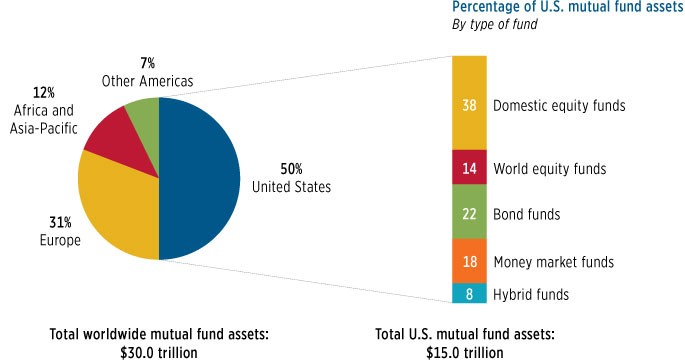2013 Portfolio Mutual Funds
Post on: 4 Июль, 2015 No Comment

Guide for Asset Allocation and Investment Selection
You can opt-out at any time.
As I stated in the 2013 Asset Allocation Guide. I will share a model portfolio for 2013 that reflects the big picture of capital markets, world economies and investment types. Of course, the make-up of each investor’s portfolio of investments will be primarily directed by their own objectives and tolerance for risk. However, you can check the 2013 Mutual Funds Portfolio as a guide and for insight into making your own tactical and strategic moves.
Market and Economic Outlook for 2013
No one can predict with accuracy what the capital markets and world economies will do over the course of any given year but, looking back to this time last year at my Where to Invest 2012 series of articles, you can see that the forecast was not bright but relatively easy to foresee:
Not even the most optimistic US economist projects the unemployment picture to improve significantly, the do-nothing US Congress will surely continue to hold the economy hostage and world economies will not improve any time soon.
2013 begins the same way: Washington politics pushes the US to the edge of the fiscal cliff while Europe re-entered recession. The prudent investor may expect more of the same in 2013: Another debt-ceiling standoff in Washington, continued weakness overseas, and top of this, the current bull market passed the average duration of 3.5 years in 2012. This does not automatically signal a new bear market in 2013 but it does mean the markets positive run may be closer to the end than the beginning.
Asset Allocation and Investment Tactics for 2013
A prudent and tactical asset allocation approach for 2013 is to take steps back in risk by reducing exposure to the stock portion of the portfolio and adding to bonds and/or cash. Because most investors are moderate to aggressive in style and have long-term (more than 10-year time horizon) objectives, such as retirement, here is my model asset allocation for 2013:
65% Stocks
25% Bonds
10% Cash
You can revisit my 2013 Asset Allocation Guide for more reasoning but this is it in summary: A moderate to aggressive investor might have a target allocation of around 70 to 80% stocks and 20 to 30% bonds with perhaps a small amount in cash. But with an aging bull market for stocks, you may want to lock in some gains and protect against downside risk by taking small but deliberate steps toward a lower risk, more defensive portfolio.
To do this, you can use defensive sectors in 2013. such as health and utilities, but also add a possible growth prospect, such as real estate. This will add diversity to the portfolio but, by only allocating around 5% to each of the 3 sectors, you will not add too much risk.
The same goes for foreign stock, which is somewhat of a question mark in terms of the near-term outlook. The risk/reward tradeoff can be large for 2013 because a great deal of uncertainty remains with Europe in recession and China’s growth slowing. However, their economic cycle may be such that 2013 could see the beginning of new and sustained growth for foreign stocks in general. In summary stocks could just as easily see a jump in price as suffer a fall. Therefore the balance for our mutual funds portfolio is to keep exposure to foreign stocks but to under-weight the allocation and use a broad index, such as the MSCI EAFE. We’ll use a 15% allocation.
Small-cap stock follows the same logic: Maintain exposure but just a bit less than you would earlier in an economic/market cycle. We’ll say 10% here.
The balance for stocks will go to one of the best S&P 500 Index funds .
For bonds, you can use a well-managed multi-sector bond fund and add a short-term bond fund. This strategy is to try to capture yield from other bond types, such as foreign bonds and high-yield bonds that can be found with most multi-sector bond funds and the best bonds in a rising interest rate environment. in terms of maturity or duration, includes short-term bond funds.
The 2013 Mutual Funds and ETF Portfolio
65% Stocks
25% Vanguard 500 Index (VFINX )
15% iShares MSCI ACWI ex US Index (ACWX )
10% iShares Russell 2000 Index (IWM )
5% Utilities Sector SPDR (XLU )
5% iShares Cohen & Steers Realty Majors (ICF )
25% Bonds
15% Loomis Sayles Bond (LSBRX )
10% PIMCO Low Duration D (PLDDX )
10% Cash
For cash, find a good money market fund at your broker.
Tips for Account Type
Keep in mind that this particular portfolio model may work better with retirement accounts, such as IRAs and 401ks, because there are certain investment types that will pay dividends and therefore generate taxable income. However, you may actually need more income if you are already in retirement. For your knowledge the investments in this portfolio that will pay higher relative dividends and interest include the bond funds, the Utilities ETF, and the Real Estate ETF. Also, a tax free money market fund may be better for you in a taxable account, whereas a taxable money market can be best for tax-deferred retirement accounts.
Disclaimer: The information on this site is provided for discussion purposes only, and should not be misconstrued as investment advice. Under no circumstances does this information represent a recommendation to buy or sell securities.














